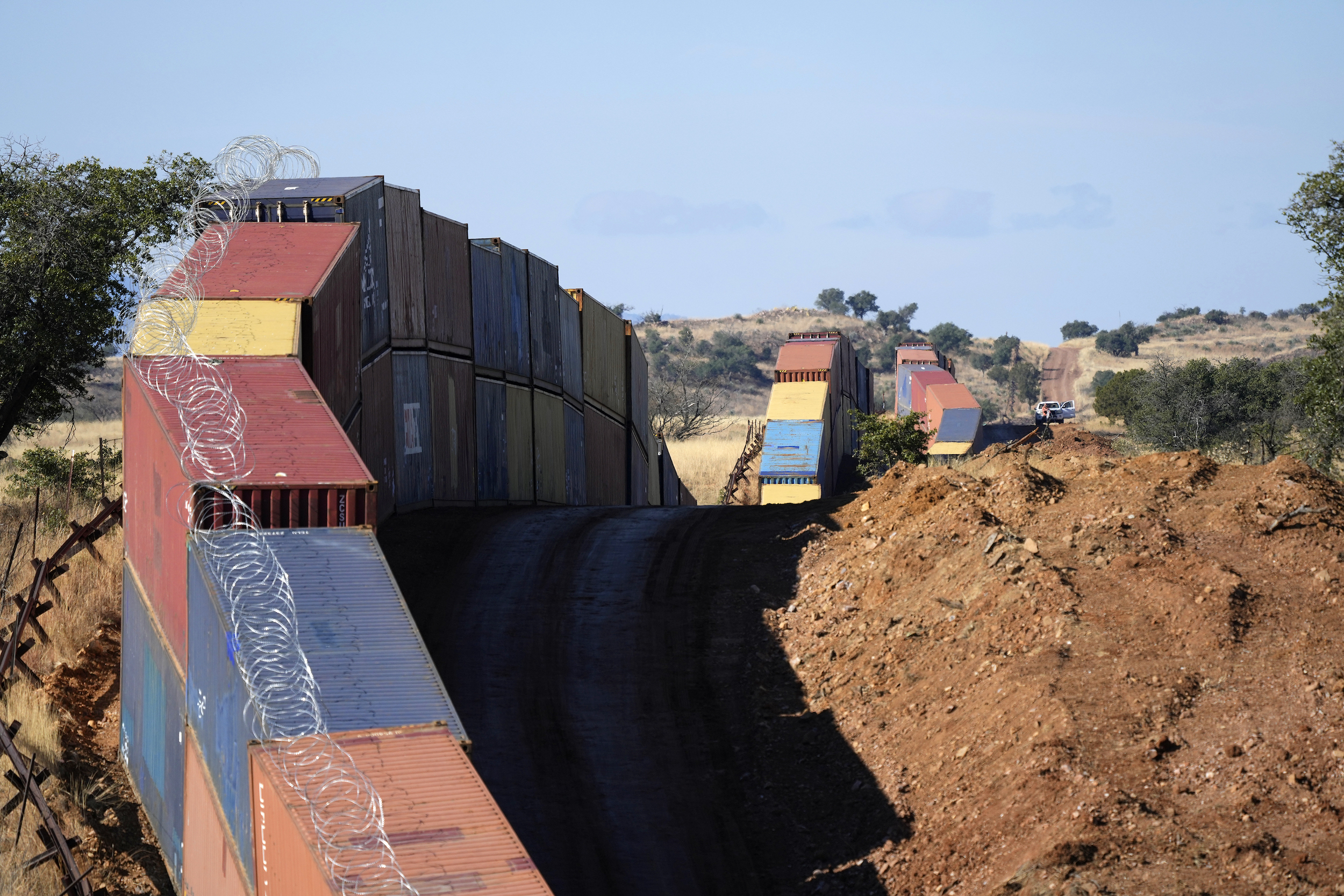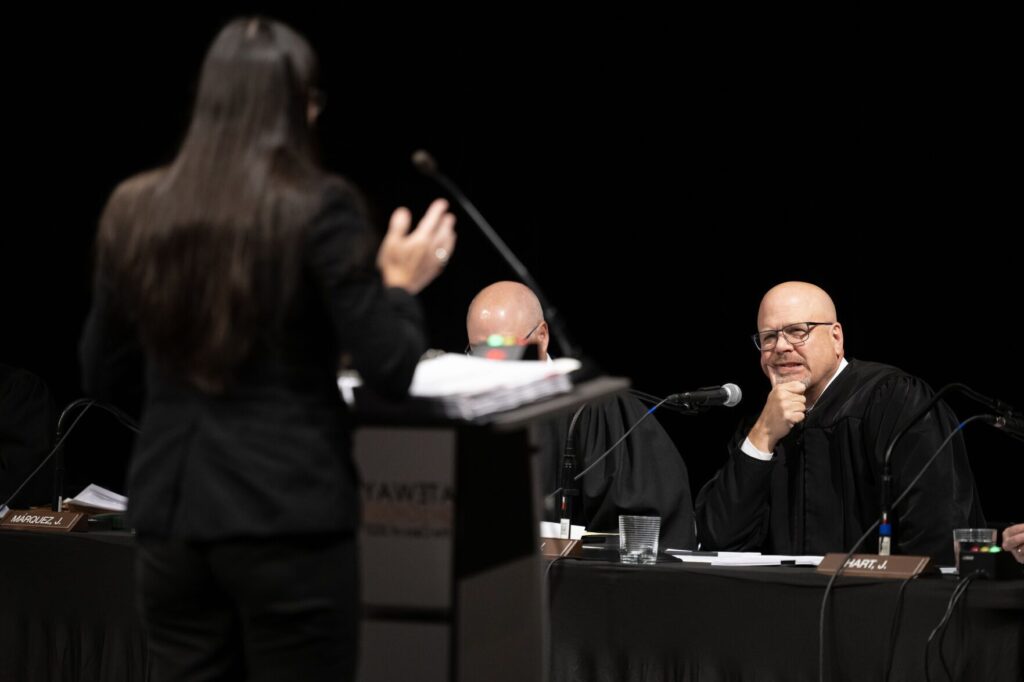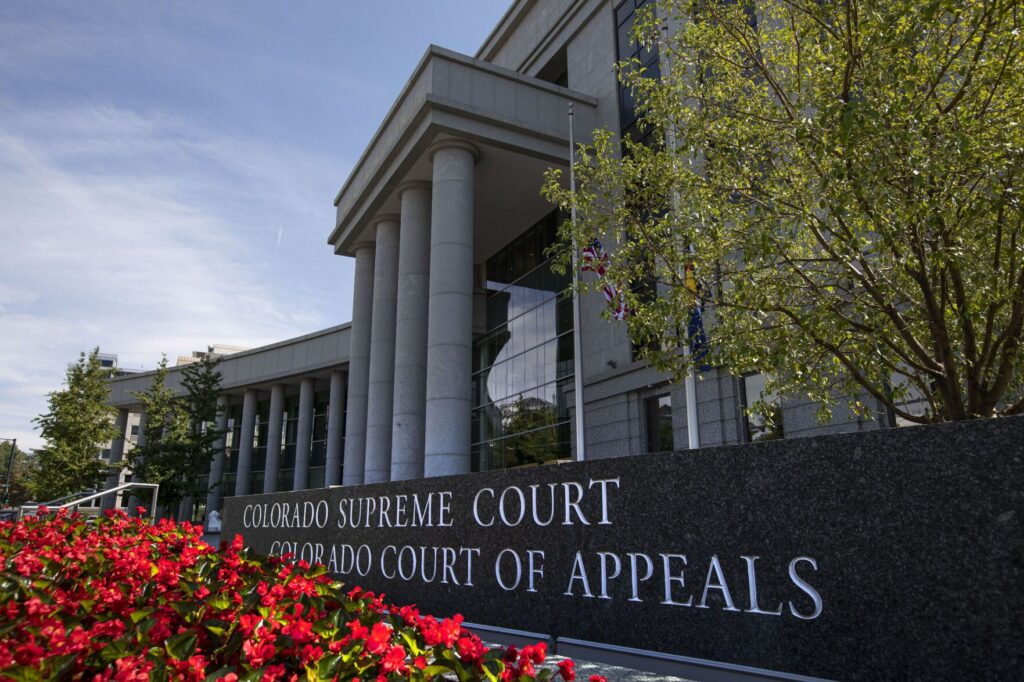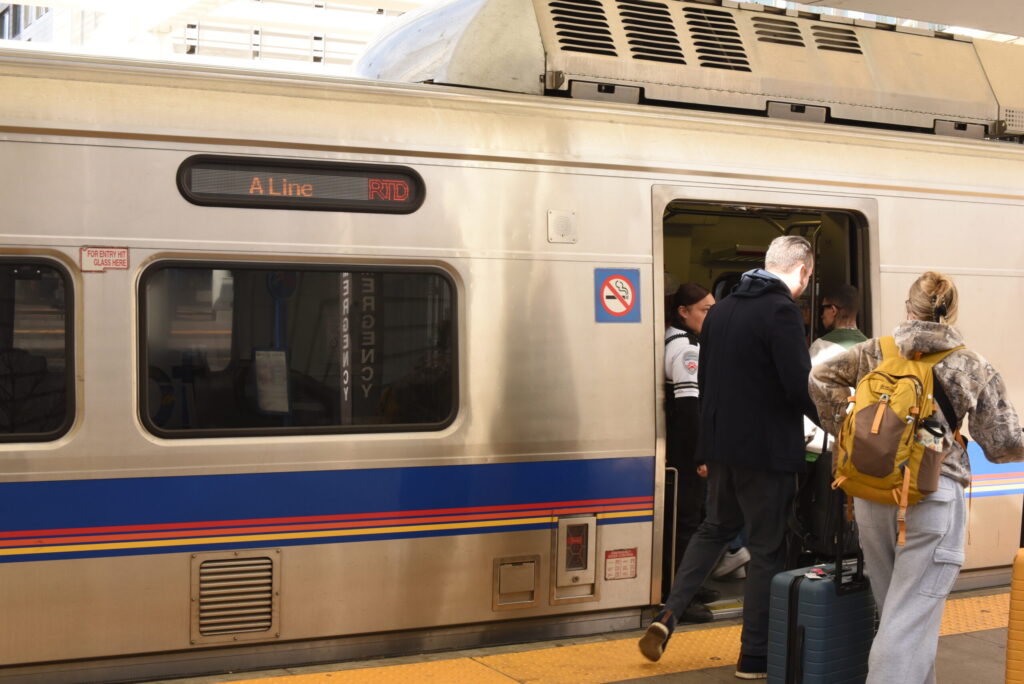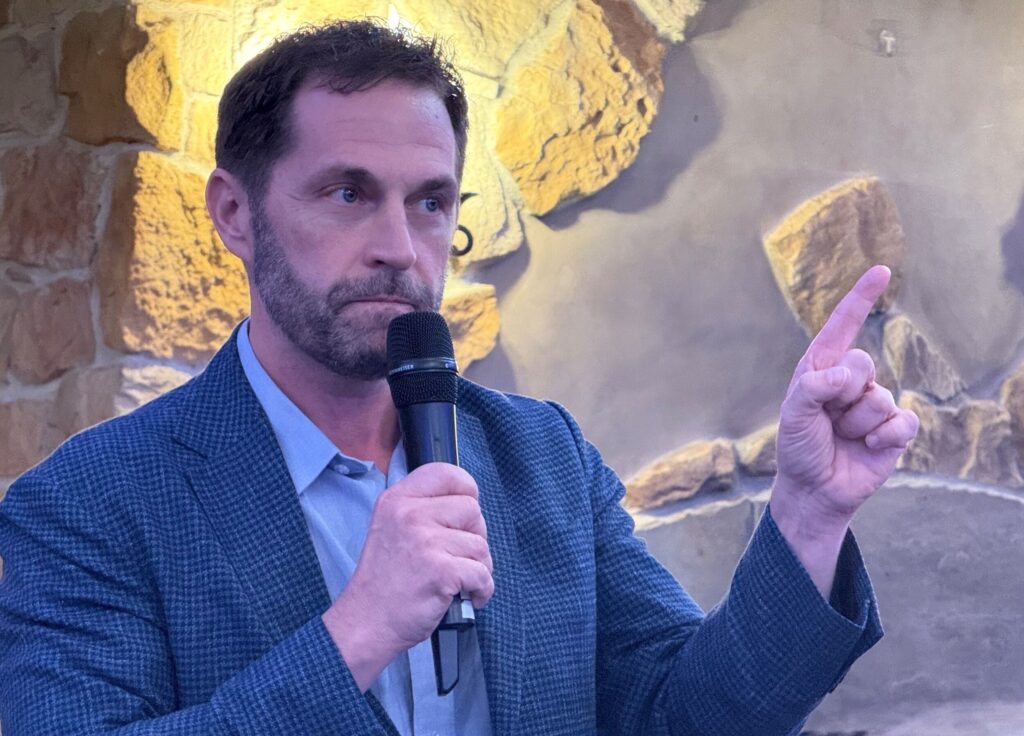Arizona’s shipping container wall coming down at southern border | OUT WEST ROUNDUP
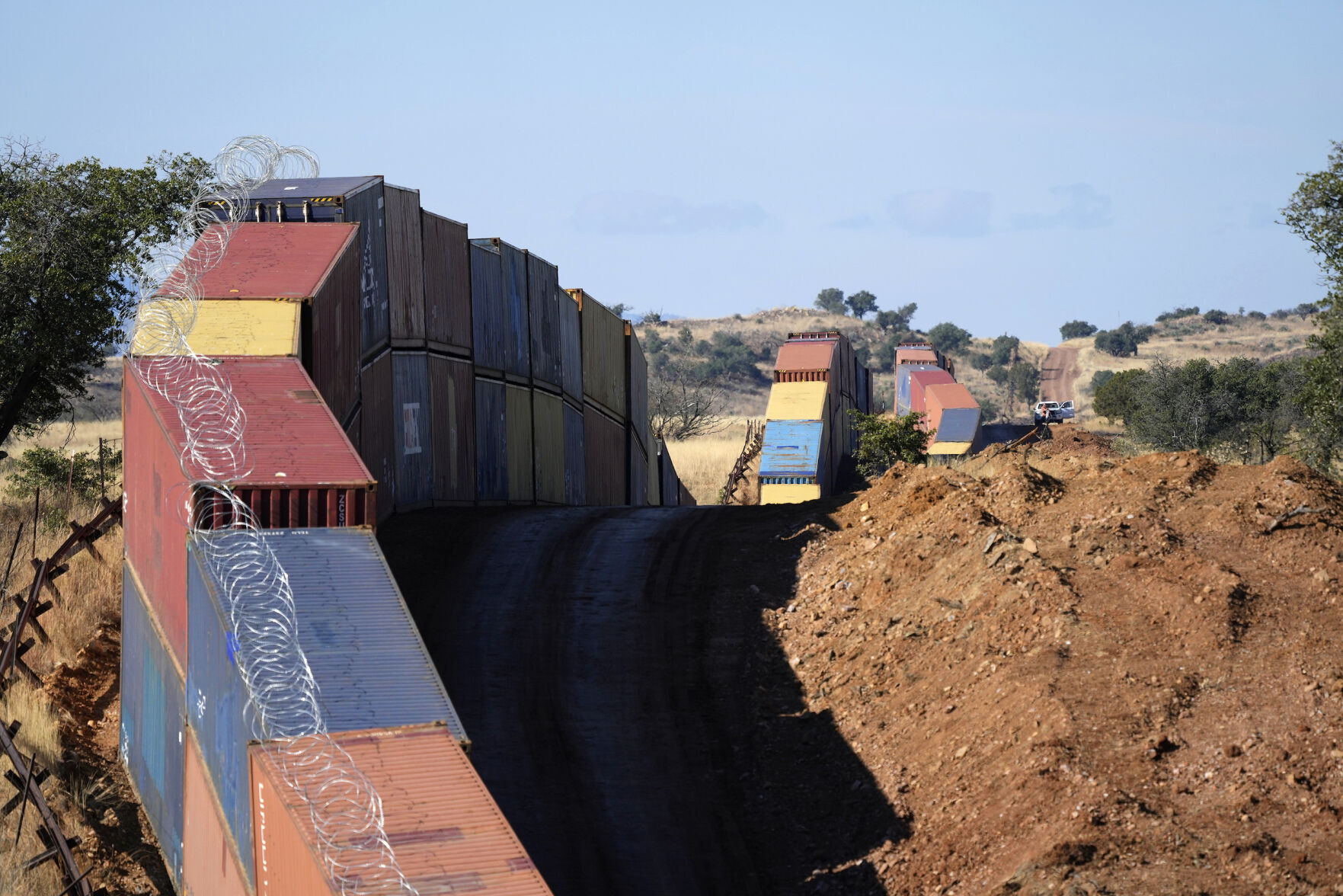
ARIZONA
Shipping container wall on border is coming down
PHOENIX – Former Republican Arizona Gov. Doug Ducey’s border barrier of shipping containers was largely dismantled in time for a new Democratic administration, costing tens of millions of dollars over just a few months as they were set up and taken down again.
Removal of the hulking red, gold and blue steel boxes created a stark visual shift in affected sections of Arizona’s southern landscape as a new governor took power and another $76 million in state funds was spent to remove the containers on top of the $95 million it cost to put them there.
Ducey had said the containers placed at an opening along the border near the western community of Yuma and across a grassland valley in eastern Arizona’s Cochise County were intended as a temporary measure until the Biden administration undertook permanent construction to secure the border.
Gov. Katie Hobbs, who was sworn in on Jan.2, was among Democrats who called it a political stunt.
An agreement between Ducey’s administration and federal agencies named in a lawsuit filed by Ducey called for the containers to come down by Jan. 4, but the court later stayed all deadlines in the case by 30 days to give Hobbs and new Attorney General Kris Mayes time to review the situation.
In Yuma, all 130 of the containers covering about 3,800 feet were removed by Jan. 3, but about a third of some 3,000 containers were erected in remote Cochise County, raising concerns about possible harm to local wildlife and natural water systems before protesters halted the work in early December. Environmentalists said the work in the Coronado National Forest imperiled endangered or threatened species like the western yellow-billed cuckoo and the Mexican spotted owl.
NEW MEXICO
Legislators seek automatic increases to base wage
SANTA FE – Democratic legislators want to link New Mexico’s statewide minimum wage to an inflation index to provide potentially automatic annual increases.
Draft bills from state Reps. Miguel Garcia of Albuquerque and Christine Chandler of Los Alamos were published on Jan. 4 that would provide an automatic adjustment to the state’s minimum wage based on the consumer price index published by the U.S. Department of Labor. The proposals may be debated once the legislature convenes on Jan. 17 for a 60-day session.
Gradual increases to the statewide minimum wage were adopted by lawmakers in 2019 and have run their course with a boost Jan. 1 to $12 per hour.
Chandler’s bill would initially raise the minimum wage to $16 an hour in 2024 with automatic annual increases thereafter to offset inflation.
The gap continues to grow between the 20 states following the federal minimum wage of $7.25 an hour and the 30 others requiring more.
U.S. inflation, an afterthought for decades, resurged with a vengeance in 2022, reaching heights unseen since the early 1980s.
Average wages haven’t kept up with prices, and lower-income households, which spend disproportionately more on housing, fuel and food, have been hit hardest. At the same time, businesses large and small are struggling to contain higher costs.
University, Los Alamos join to probe migratory bird die-off
SANTA FE – Two years after New Mexico saw migratory birds literally falling from the sky, New Mexico State University and Los Alamos National Laboratory have announced plans to establish a research program on bird die-off.
the two entities will collaborate with the U.S. Geological Survey and other agencies to recruit and train students to study “disaster ecology,” the Santa Fe New Mexican reported on Dec. 31.
A $250,000 grant from the U.S. Department of Agriculture combined with other funding sources will cover the cost for 24 students-graduate and undergraduate-to join the four-year program.
The students will examine how a changing climate is impacting migratory birds and leading to a die-off like one seen in the fall of 2020.
Sightings of groups of dead birds were reported by residents in the Taos area and at Valles Caldera National Preserve in the north to the cottonwood forest along the Rio Grande to southern New Mexico, including at White Sands Missile Range.
Analysis by biologists showed starvation and unexpected weather were behind the die-off. Researchers at the time said many of the birds were severely emaciated. An unusual storm likely caused them to be disoriented and fly into objects or buildings.
They ruled out disease and poisoning.
NEBRASKA
Outgoing senator aware Trump criticism shapes legacy
OMAHA – Nebraska’s outgoing U.S. Sen. Ben Sasse knows he may be remembered more for his criticisms of former President Donald Trump than for the policies he supported during his eight years in office.
Sasse talked about his political legacy with the Omaha World-Herald as he prepared to leave the Senate on Jan. 8 to become president of the University of Florida.
Sasse was a prominent Trump critic who joined with a handful of other Republicans to vote to convict the former president at his impeachment trial after the 2021 Capitol riot. Those criticisms led to Sasse being sharply criticized by his own political party in Nebraska even though Sasse voted with Trump 85% of the time and helped get his three U.S. Supreme Court nominees confirmed.
Sasse acknowledged that his complicated relationship with Trump will shape his legacy.
Sasse said he is especially proud of his work with the Senate Intelligence committee that included setting up a commission on cybersecurity. He said 120 of that group’s 190 recommendations have been passed into law.
The University of Florida job will allow Sasse – who studied American history at Harvard, Yale and Oxford – to return to academia at a much bigger institution. Before he was elected to the Senate, Sasse led the small, private Midland University in his hometown of Fremont, Nebraska.
Sasse said he couldn’t resist the chance to lead one of the nation’s largest public universities even after rejecting overtures from other universities in recent years.
Newly elected Gov. Jim Pillen will name Sasse’s replacement, and the leading candidate for the job is former Gov. Pete Ricketts who Pillen replaced this month after term limits kept the Republican from running again.
SOUTH DAKOTA
Public universities extend in-state tuition to Wisconsin, Illinois
SIOUX FALLS – South Dakota’s six public universities plan to offer in-state tuition rates to students from Wisconsin and Illinois by next fall.
The South Dakota Advantage plan has until now offered in-state tuition to undergraduates and graduate students from Colorado, Iowa, Montana, Nebraska, North Dakota and Wyoming residents, the Argus Leader reported on Dec. 29. The Board of Regents voted to add Wisconsin and Illinois to the list earlier in December.
Officials at South Dakota’s universities say the move should boost enrollment and lead to more graduates remaining in South Dakota. The regents said in a Dec. 9 news release that about 30% of nonresident students remain in-state following graduation.
In-state students and students from states in the South Dakota Advantage plan will pay about $253.85 per credit hour at Black Hills State University, Dakota State University and Northern State University. They will pay $259.10 per credit hour in undergraduate studies at the University of South Dakota and South Dakota State University and $260.55 per credit hour in undergraduate studies at South Dakota Mines.
Minnesota isn’t included in the South Dakota Advantage plan because officials controlling public universities in both states agreed in 1978 that Minnesota residents who attend any South Dakota public university must pay the higher rate between resident tuition at the school they attend or the average rate of nine Minnesota schools.
